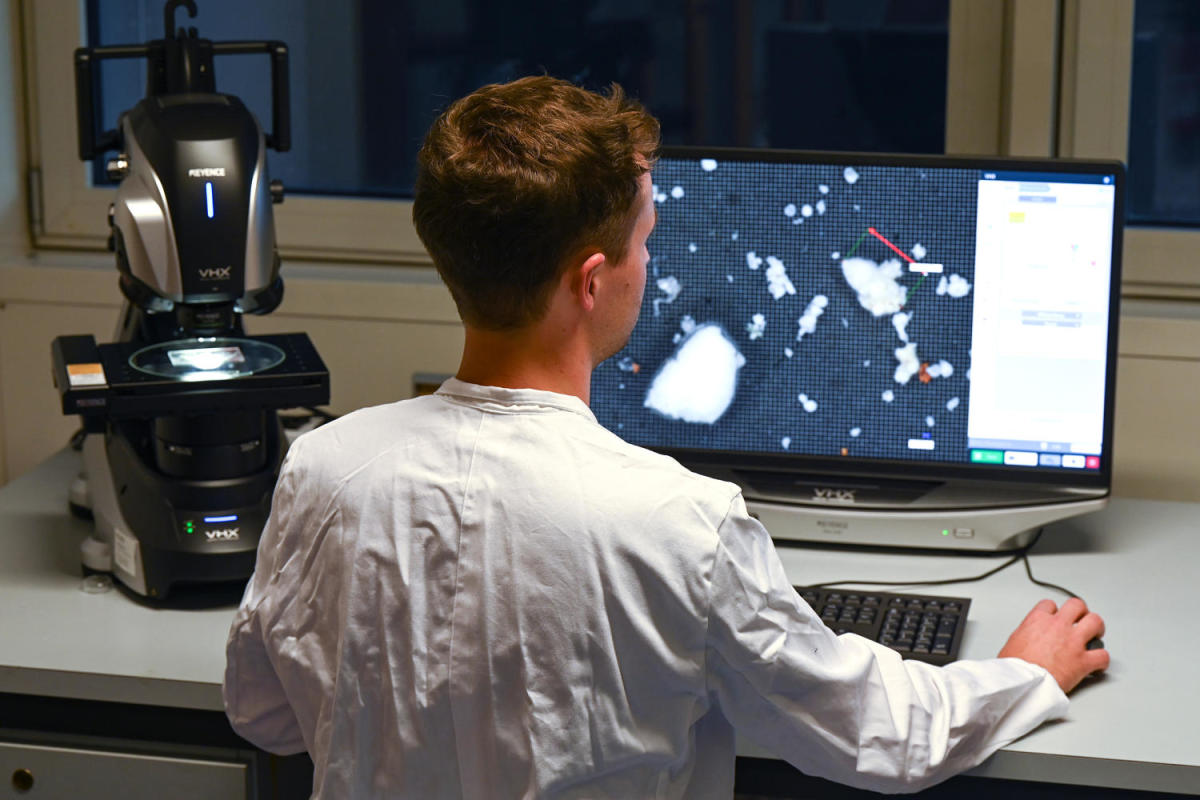Study Links Microplastics and Nanoplastics to Increased Cardiovascular Disease Risk
Introduction
A groundbreaking new study published in The New England Journal of Medicine suggests that individuals with microplastics and nanoplastics present in plaque lining a major blood vessel in their neck may have a higher risk of heart attack, stroke, or death. This study is the first to establish a direct link between these tiny plastic particles, originating from degraded plastic pollution, and cardiovascular disease.
Ubiquitous Presence of Microplastics and Nanoplastics
Microplastics, defined as particles smaller than 5 millimeters, and nanoplastics, even smaller and only visible with specialized microscopes, have become increasingly prevalent. These plastics have been discovered in diverse settings, ranging from snowfall in Antarctica to the depths of the Marianas Trench. They have also been found in various human body tissues, including blood, breast milk, urine, and placental, lung, and liver tissues.
Initiation of the Study
Dr. Raffaele Marfella and his colleagues from the University of Campania Luigi Vanvitelli’s department of advanced medical and surgical sciences in Naples, Italy, embarked on this study to identify new risk factors for cardiovascular disease. Aware of the extensive plastic pollution impacting the environment, the researchers questioned whether micro- and nanoplastics could also detrimentally affect human arteries. These particles could enter the body through inhalation, ingestion, or skin absorption.
Research Methodology and Findings
To explore the effects of micro- and nanoplastics, the researchers examined patients scheduled for surgery related to carotid artery stenosis, a condition marked by the narrowing of blood vessels due to plaque accumulation. Retrospectively, the team analyzed plaque samples from 257 patients and monitored their health over an average follow-up period of 34 months. Among the analyzed samples, 150 showed the presence of plastic particles, primarily nanoplastics. Subsequently, 20% of these patients experienced a nonfatal heart attack, nonfatal stroke, or death from any cause compared to the 7.5% observed in patients without detectable plastic particles.
After factoring in age, sex, body mass index, and other health conditions, such as diabetes and abnormal cholesterol, researchers observed that patients with detectable levels of micro- and nanoplastics in their plaque faced nearly a five times greater risk of experiencing a cardiovascular event compared to patients without plastic particles.
The Link Between Plastic Particles and Inflammation
Several experimental studies on animals and cells have demonstrated the association between plastic particles and an increased risk of disease. In a previous study, microplastics were detected in human arteries for the first time. The Italian researchers in the current study measured inflammation markers among the patients and observed a rise proportional to the presence of plastic particles. Inflammation is known to trigger cardiovascular disease, including heart attacks or myocardial infarctions, thus potentially verifying the relationship between micro- and nanoplastics and heart disease.
The Scope of the Study and Its Implications
As an observational study, this research establishes an association between plastic particles and cardiovascular events, such as heart attacks, strokes, or deaths. However, it cannot definitively prove that micro- and nanoplastics caused these occurrences. Conducting a controlled trial involving the intentional exposure of individuals to potential toxins would be unethical.
Although limited to a specific patient group, the study serves as a foundation for future investigations. Identifying micro- and nanoplastics within the general population and tracking the subsequent development of cardiac events may provide invaluable insights into the effects of these particles on cardiovascular health.
Continued Research
This study is just the beginning. Similar studies on other human tissues are currently in progress, with researchers set to extend the body of knowledge on the in-depth impact of microplastics and nanoplastics.
Conclusion
This study highlights the potential health risks associated with microplastics and nanoplastics in relation to cardiovascular disease. The presence of these plastic particles in plaque within a blood vessel has been linked to an elevated risk of heart attacks, strokes, and other cardiovascular events. Future research will further explore the effects of micro- and nanoplastics on human health and, hopefully, stimulate vital discussions on the broader environmental impact.


